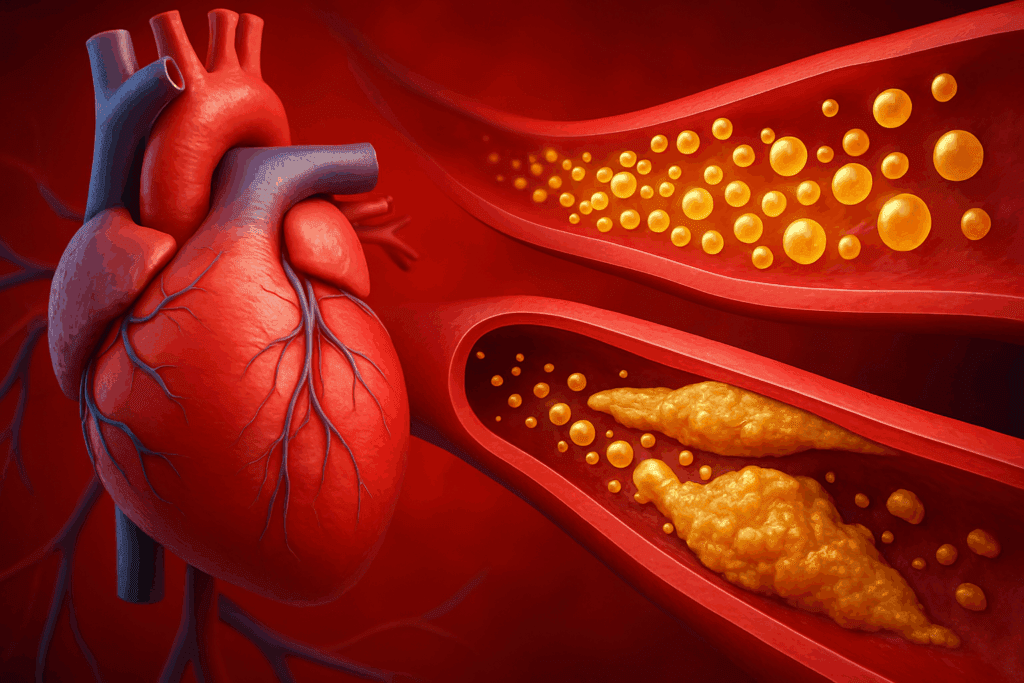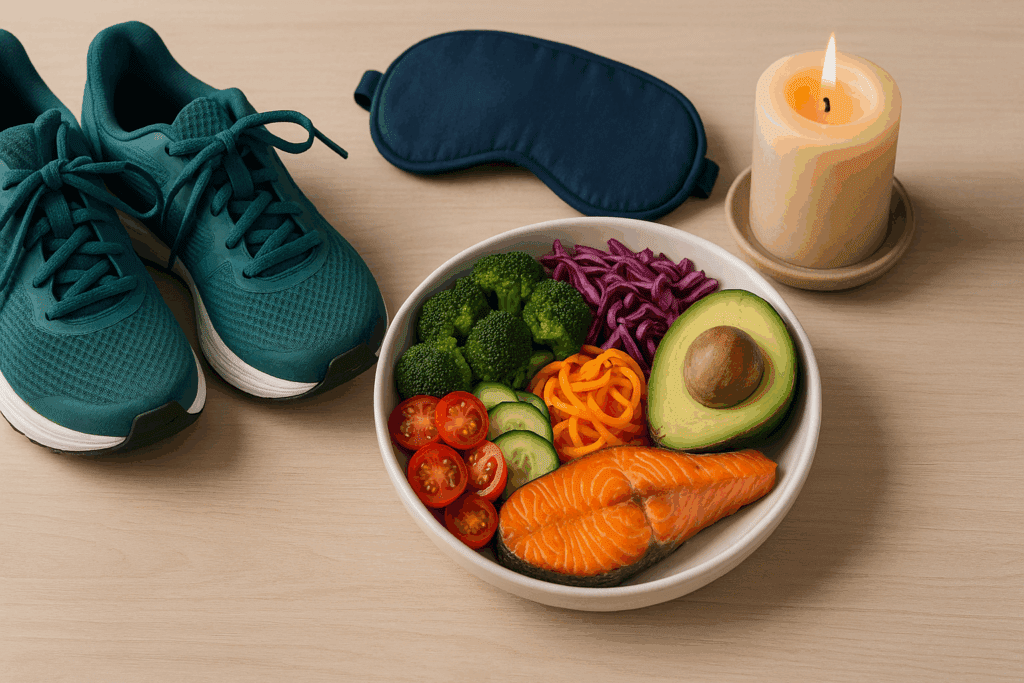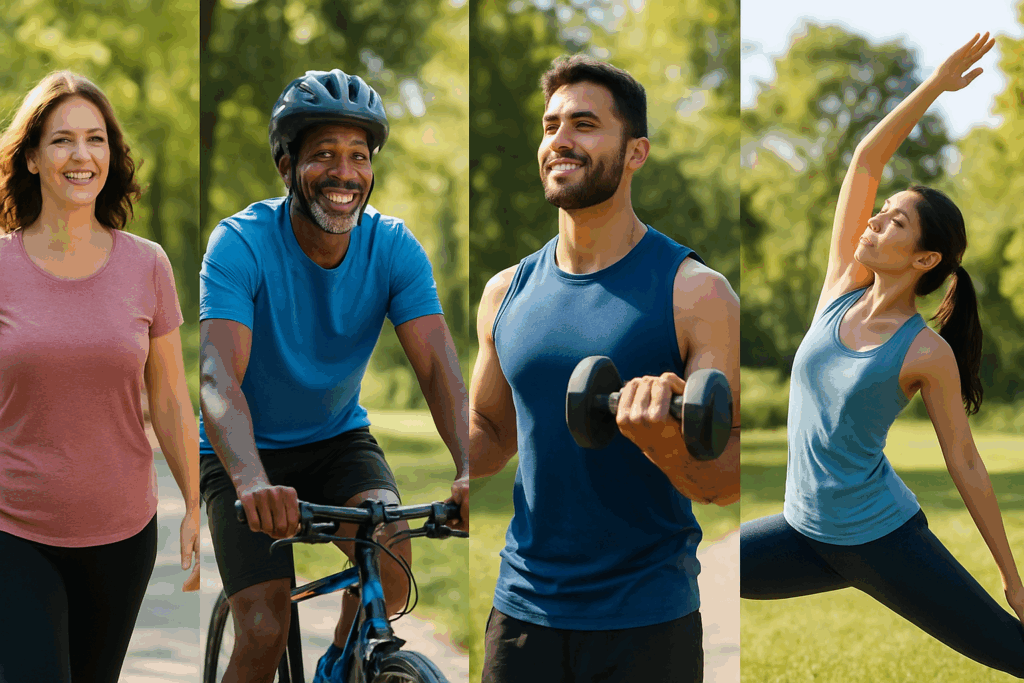Understanding HDL and Why It Matters for Health and Performance
High-density lipoprotein (HDL), often referred to as “good cholesterol,” plays a critical role in cardiovascular health. Unlike low-density lipoprotein (LDL), which contributes to the buildup of plaque in the arteries, HDL helps transport cholesterol away from the arteries and back to the liver for elimination. This reverse cholesterol transport process is a key mechanism by which HDL protects against atherosclerosis and heart disease. For athletes and fitness enthusiasts, the implications extend beyond heart health—higher HDL levels are associated with enhanced metabolic function, better vascular efficiency, and improved oxygen delivery during endurance training.

Understanding the dynamics of HDL is especially relevant in an age where sedentary lifestyles, poor dietary habits, and chronic stress contribute to lowered HDL levels across populations. Many individuals focus exclusively on lowering LDL or total cholesterol, but optimizing HDL is equally, if not more, important in promoting long-term cardiovascular resilience. This becomes particularly crucial for individuals engaging in performance-focused training regimens, where cardiovascular endurance and recovery efficiency are directly linked to lipid profile balance.
In this context, exploring the best exercise to increase HDL becomes a practical and evidence-based way to enhance both longevity and performance. Whether your goal is improved cardiovascular endurance, faster recovery, or reducing your long-term risk for heart disease, exercise strategies that target HDL elevation are invaluable tools in your health arsenal.
You may also like: Smart Nutrition Choices for a Healthier Lifestyle: What to Know About Whole Grain Rice and Whole Wheat Rice

How Exercise Impacts HDL: Mechanisms and Metabolic Benefits
Exercise has been consistently shown to elevate HDL levels through a variety of physiological mechanisms. First, physical activity enhances lipoprotein lipase activity, an enzyme responsible for breaking down triglyceride-rich lipoproteins, which in turn facilitates HDL synthesis. Additionally, regular aerobic activity has been linked to increased expression of the ABCA1 transporter protein in skeletal muscle and liver tissue, promoting cholesterol efflux to HDL particles.
Moreover, exercise improves the functional quality of HDL. This means that not only does HDL quantity increase, but its ability to act as an antioxidant and anti-inflammatory agent also improves. In endurance athletes, these benefits translate to better protection against oxidative stress, faster muscle recovery, and enhanced performance capacity. This functional improvement in HDL is an emerging area of interest among researchers exploring how the composition and efficiency of HDL particles are influenced by long-term exercise adaptations.
Studies also indicate that the intensity, duration, and frequency of physical activity directly affect HDL responses. For example, moderate to vigorous aerobic exercise has been consistently associated with significant HDL increases. Resistance training, when performed at a high enough intensity, has also shown promising results. These findings make it clear that the best exercise to increase HDL is one that is sustained, progressive, and adapted to individual fitness levels and goals.

Aerobic Exercise: The Gold Standard for Raising HDL Naturally
When it comes to raising HDL levels, aerobic exercise remains the most widely endorsed modality. Activities such as brisk walking, jogging, cycling, swimming, and dancing not only elevate heart rate but also improve endothelial function, insulin sensitivity, and lipid metabolism. These effects are particularly pronounced when exercise is performed consistently over several weeks or months.
Numerous clinical studies have demonstrated that aerobic training leads to a modest but meaningful increase in HDL levels, often in the range of 5% to 15%, depending on baseline fitness and frequency of exercise. For instance, a 12-week study involving sedentary adults who engaged in 30-minute sessions of moderate-intensity walking five times per week showed significant improvements in both HDL and overall lipid profiles. Notably, the benefits were more profound in individuals who initially had lower HDL levels, suggesting a greater capacity for improvement when starting from a deficient baseline.
What makes aerobic exercise particularly effective is its ability to simultaneously reduce triglycerides and body fat, two factors that are negatively correlated with HDL. As fat mass declines, especially visceral adipose tissue, the body’s capacity to mobilize cholesterol into HDL particles improves. Therefore, regular aerobic activity stands out as an essential component of any regimen designed to increase HDL while supporting endurance and stamina.

High-Intensity Interval Training (HIIT) and Its Effects on HDL and Stamina
High-intensity interval training, or HIIT, has gained popularity for its time-efficient approach to improving cardiovascular health and physical performance. In recent years, HIIT has also been examined for its role in improving lipid profiles, including its impact on HDL cholesterol. This form of exercise involves repeated bouts of high-intensity effort followed by periods of active recovery, creating both metabolic and mechanical stimuli that support cardiovascular conditioning.
Emerging evidence suggests that HIIT may offer unique advantages in elevating HDL. In a study published in the Journal of Sports Medicine and Physical Fitness, participants who completed eight weeks of HIIT cycling sessions experienced significant increases in HDL cholesterol, coupled with reductions in LDL and triglycerides. The underlying mechanisms are thought to involve enhanced mitochondrial biogenesis and improved fatty acid oxidation, both of which are stimulated by high-intensity workloads.
From a performance standpoint, HIIT contributes to improved VO2 max, lactate threshold, and muscular endurance—all of which are essential for athletes and active individuals. The dual benefit of improving HDL while also enhancing aerobic capacity makes HIIT a powerful tool in both preventive cardiology and performance enhancement. However, it’s important to approach HIIT with proper progression and supervision, especially for individuals new to exercise or those with existing cardiovascular risk factors.

Strength Training and HDL: The Overlooked Connection
While aerobic exercise often takes center stage in discussions about cardiovascular health, strength training offers equally compelling benefits for HDL optimization. Resistance training has been shown to improve body composition, reduce inflammation, and enhance insulin sensitivity—factors that collectively contribute to healthier lipid profiles. Although the increases in HDL from strength training are generally more modest compared to aerobic exercise, the benefits are still significant and should not be underestimated.
In a meta-analysis examining the effects of resistance training on lipid profiles, researchers found that participants engaging in strength training two to three times per week experienced meaningful improvements in HDL cholesterol levels. These improvements were most notable when workouts included compound movements such as squats, deadlifts, bench presses, and rows, which activate large muscle groups and stimulate systemic metabolic responses.
Moreover, strength training enhances resting metabolic rate and lean muscle mass, both of which support long-term cardiovascular health. For endurance athletes, incorporating resistance exercises helps improve joint stability, reduce injury risk, and enhance overall movement efficiency. As such, strength training complements aerobic and interval training strategies, providing a holistic approach to improving HDL and physical performance.
Endurance Sports and the Long-Term Impact on HDL Levels
Engaging in endurance sports such as long-distance running, cycling, or rowing provides sustained cardiovascular benefits that extend well beyond temporary improvements in HDL. These activities demand high energy output, significant cardiovascular adaptation, and efficient metabolic regulation—all of which create an internal environment conducive to elevated HDL production and functionality.
Endurance athletes often exhibit higher baseline HDL levels compared to sedentary individuals, largely due to the chronic physiological stress placed on the body during prolonged training. Over time, these repeated stressors enhance lipid transport systems, reduce systemic inflammation, and improve vascular elasticity. The cumulative effect is a more favorable lipid profile and a reduced risk of cardiovascular disease, even in the presence of high caloric intake or intense physical stress.
Interestingly, research also shows that HDL particle size and composition are positively influenced by chronic endurance training. Larger, more functional HDL particles are better able to engage in reverse cholesterol transport and exert anti-inflammatory effects. These findings reinforce the notion that the best exercise to increase HDL may not be a single modality but a combination of long-term endurance work supported by strategic variations in intensity and volume.
Optimizing Exercise Frequency and Duration for HDL Elevation
Achieving consistent improvements in HDL levels requires more than just occasional bursts of activity. Frequency and duration play pivotal roles in determining the efficacy of any exercise intervention. Research consistently shows that individuals who engage in at least 150 minutes of moderate-intensity aerobic activity or 75 minutes of vigorous-intensity activity per week tend to have healthier lipid profiles, including higher HDL levels.
For individuals aiming to make exercise to increase HDL a regular part of their lifestyle, incorporating a variety of training modalities—such as brisk walking on weekdays and cycling or swimming on weekends—can help maintain consistency while preventing boredom. Cross-training strategies are particularly effective in sustaining motivation and reducing the risk of overuse injuries, which can derail long-term fitness efforts.
It’s also important to understand that HDL improvements may not be immediate. In many cases, measurable changes in HDL may take several weeks or months of consistent training to become evident. Patience and adherence are key, especially when integrating exercise into a broader lifestyle change that includes dietary improvements, stress management, and adequate sleep—all of which interact synergistically with physical activity to support HDL elevation.

Nutrition, Recovery, and Lifestyle Factors That Enhance Exercise Outcomes
While exercise plays a central role in raising HDL, its effectiveness is magnified when paired with complementary lifestyle factors. Nutrition, in particular, exerts a profound influence on lipid metabolism. Diets rich in omega-3 fatty acids, monounsaturated fats, fiber, and antioxidant-rich vegetables enhance HDL functionality and support the lipid-modulating effects of exercise. Conversely, excessive intake of refined sugars, trans fats, and processed foods can blunt HDL responsiveness, even in physically active individuals.
Recovery is another crucial element that often gets overlooked. Overtraining without sufficient rest can lead to chronic inflammation and hormonal imbalances that impair lipid metabolism. Ensuring adequate sleep, utilizing active recovery strategies, and periodically deloading training intensity are all practical ways to support recovery and maintain the HDL-boosting effects of physical activity.
Stress management also contributes to optimal HDL levels. Chronic psychological stress has been associated with lower HDL and higher LDL and triglyceride levels. Practices such as mindfulness meditation, yoga, and nature walks not only support emotional well-being but can also enhance cardiovascular resilience. When combined with a regular exercise routine, these lifestyle interventions offer a powerful, multifaceted strategy to improve HDL naturally.

Frequently Asked Questions: Boosting HDL Through Exercise and Endurance Training
1. Can certain types of exercise increase HDL faster than others? Yes, certain exercise modalities appear to accelerate the rise in HDL levels more effectively than others. Among the best exercises to increase HDL, high-intensity interval training (HIIT) and long-duration aerobic workouts stand out due to their influence on cholesterol transport proteins and metabolic flexibility. HIIT stimulates rapid adaptations in cardiovascular function, encouraging the body to increase HDL production while improving lipid oxidation. Aerobic activities such as running and swimming, especially when performed consistently, help build cumulative benefits that raise HDL over time. Choosing an exercise to increase HDL isn’t just about intensity—it’s also about consistency, progression, and recovery, all of which influence the long-term cholesterol profile.
2. How long does it usually take to see results from an exercise plan targeting HDL improvement? While some changes in lipid profile can appear after a few weeks, noticeable increases in HDL often take about 8 to 12 weeks of consistent training. This timeline may vary depending on age, baseline HDL levels, dietary habits, and the type of exercise chosen. For instance, someone choosing the best exercise to increase HDL—such as structured aerobic interval sessions—might see faster improvements compared to someone doing less intense or irregular workouts. Importantly, HDL response is not solely about short-term spikes but about creating sustainable physiological shifts. Long-term commitment is essential for lasting benefits, especially for individuals with initially low HDL levels.
3. Is walking enough as an exercise to increase HDL, or should more intense workouts be added? Walking can certainly help improve HDL, especially for beginners or sedentary individuals. However, to optimize results, incorporating higher-intensity activities or extended durations may be necessary. While walking is a gentle and accessible way to begin, it may not offer the metabolic stimulus that some other forms of exercise provide. If someone is aiming for the best exercise to increase HDL and already has a moderate fitness base, supplementing walking with cycling, jogging, or interval sessions could provide a more robust lipid-modulating effect. Ultimately, combining walking with strength training or aerobic intervals often yields more noticeable and faster HDL improvements.
4. What are some lifestyle habits that enhance the effects of exercise on HDL? Several lifestyle habits can amplify the effectiveness of exercise to increase HDL. Nutrient-dense diets, especially those rich in monounsaturated fats (like olive oil and avocados), have a synergistic effect with exercise on HDL metabolism. Managing stress levels also plays a crucial role—chronic stress can suppress HDL production through hormonal dysregulation. Sleep quality matters too; insufficient or fragmented sleep has been linked to unfavorable lipid profiles. When these factors are aligned with a consistent routine that includes the best exercise to increase HDL, results tend to appear more quickly and sustain longer. It’s the integration of holistic wellness—not just isolated activity—that drives meaningful cholesterol transformation.
5. Does gender or age influence how exercise affects HDL levels? Yes, gender and age can significantly affect how the body responds to an exercise to increase HDL. Premenopausal women often have higher baseline HDL levels due to estrogen’s cardioprotective effect, and they may experience modest HDL changes from exercise. Postmenopausal women, however, tend to show more pronounced HDL improvements when incorporating the best exercise to increase HDL into their routine. Men, especially those over 40, often need a combination of resistance training and aerobic work to see significant lipid shifts. Aging muscles also respond differently to exercise stimuli, so optimizing recovery and adjusting training volume becomes more important in older adults targeting HDL improvements.
6. Can resistance training alone effectively raise HDL levels? Resistance training does have a positive effect on HDL, although it’s typically less pronounced than aerobic training. However, its benefits go beyond direct HDL elevation—it supports body composition changes, insulin sensitivity, and muscle-driven glucose uptake. When resistance training is part of a well-rounded program that includes aerobic sessions, it becomes an effective tool for those seeking the best exercise to increase HDL. Compound movements like squats, deadlifts, and presses have been shown to stimulate beneficial hormonal responses that may indirectly support lipid regulation. While resistance training alone may not be the fastest method, its long-term contribution to overall HDL health is significant.
7. Are there any common mistakes people make when using exercise to increase HDL? A frequent mistake is relying solely on low-intensity or infrequent exercise, expecting dramatic HDL changes. Others may overtrain without adequate recovery, which can lead to inflammation and negate potential HDL gains. Nutrition is often overlooked; even the best exercise to increase HDL won’t be effective if paired with a poor diet. Additionally, people sometimes neglect sleep or fail to monitor their progress with regular lipid panels, missing opportunities to adjust their routine. To avoid these pitfalls, it’s essential to view HDL improvement as a comprehensive strategy that integrates exercise, recovery, diet, and stress reduction.
8. Are there specific times of day when exercising might be more effective for increasing HDL? While HDL responses to exercise are more influenced by consistency than time of day, emerging evidence suggests morning workouts may provide a slight edge. Morning aerobic exercise has been linked to improved metabolic markers, including fasting lipid profiles, which may support HDL production. However, for many people, the best exercise to increase HDL is the one they can consistently perform—regardless of timing. That said, fasted-state exercise in the morning may encourage fat metabolism and potentially support HDL function, especially in individuals with insulin resistance or metabolic syndrome. As always, personal preference and adherence matter most in the long run.
9. Can overtraining negatively impact HDL levels or cardiovascular health? Yes, overtraining can paradoxically reduce HDL and impair cardiovascular function. When the body is exposed to chronic stress from excessive training without sufficient recovery, it can trigger systemic inflammation and elevate cortisol levels. These changes may suppress HDL production or diminish its antioxidant function. Even someone engaging in the best exercise to increase HDL can undermine their results by ignoring recovery cues, sleep, or nutrient replenishment. Balancing intensity with adequate rest, cross-training, and periodic deloading is essential for maintaining both HDL and heart health, especially in endurance athletes.
10. How do genetic factors influence your response to HDL-targeting exercise? Genetics play a significant role in determining HDL baseline levels and responsiveness to exercise. Some individuals are genetically predisposed to lower HDL due to variants in the CETP or APOA1 genes, which can influence how HDL particles are synthesized and function. While these individuals may need to work harder or combine several interventions to raise HDL, they are not without hope. Even for those with a less favorable genetic profile, engaging in the best exercise to increase HDL can still lead to measurable improvements in overall cardiovascular health and HDL particle function. Genetic testing can be useful in personalizing exercise plans, allowing for a more targeted approach that respects individual variability.
Conclusion: A Holistic Blueprint to Boost HDL and Enhance Endurance
The journey to optimize cardiovascular health and athletic performance is multifaceted, and elevating HDL cholesterol represents a vital piece of that puzzle. Understanding the science behind how different forms of exercise influence HDL levels empowers individuals to make informed decisions about their training approaches. Whether through aerobic conditioning, high-intensity interval sessions, resistance training, or endurance sports, the benefits of consistent physical activity are profound and far-reaching.
Importantly, there is no single best exercise to increase HDL—rather, the most effective strategies involve a combination of diverse training modalities performed with regularity and purpose. Complementing these efforts with sound nutrition, sufficient recovery, and stress reduction creates a comprehensive lifestyle framework that supports both cardiovascular wellness and performance optimization. As the research continues to evolve, one thing remains clear: integrating movement, mindfulness, and metabolic health is not just a prescription for longevity, but a pathway to living with greater vitality, energy, and resilience.
Was this article helpful? Don’t let it stop with you. Share it right now with someone who needs to see it—whether it’s a friend, a colleague, or your whole network. And if staying ahead on this topic matters to you, subscribe to this publication for the most up-to-date information. You’ll get the latest insights delivered straight to you—no searching, no missing out.
Further Reading:
9 ways to increase your HDL cholesterol levels

